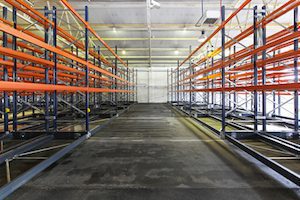
Warehouse Racking In Nigeria
The meaning of warehouse racks
Warehouse racking, a crucial component of the building’s framework, can slow down or speed up warehouse operations. Warehouse managers may utilize space and organize their warehouses more effectively with the help of warehouse racking, which also speeds up the picking process. Aisle width, docking locations, shipment areas, and other warehouse components all have an impact on warehouse racking alternatives, therefore the layout of the warehouse is very important.
Types of Warehouse Racking

There are various kinds of materials handling systems, commonly referred to as pallet racks, that are used in warehouses. Pallets or skids made of wood, metal, or plastic are integrated with larger racking systems made up of shelves at different levels. Different widths of decking bases are available to support items placed on storage racks. When loading warehouse racking, which is frequently several feet high, forklifts are necessary. There are numerous configurations for warehouse racking systems, such as selected racks, drive-in or drive-through racks, push-back racks, and flow racks.
- Selective Racks: This is the most popular pallet system, offer access from an aisle. These warehouse racking solutions are perfect for deep-reach, conventional, and small aisle racking. Selective racks can hold one pallet deep and call for specialized narrow lift vehicles.
- Drive-In and Drive-Through Racks: Drive-in racks and drive-through racks are perfect for high-density storage. These warehouse racking systems, which are typically made of steel, offer enough room for a forklift to enter their bay. It is significant to highlight that, in contrast to drive-through racks, drive-in racks only have one entry point. Drive-in racks are suitable for the last in, first out (LIFO) method, which is frequently used for nonperishable or low-turnover products. A drive-through system, on the other hand, necessitates a first in, first out (FIFO) procedure. Floor-to-ceiling constructions may be used for drive-in and drive-through racks.
- Push Back Racking Systems: Push back racking systems hold products that span 2–5 pallets and are typically used for bulk storage. A pallet is pushed to the front of the system when it is unloaded and pushes the following pallet back when one is loaded onto the system. The LIFO system is used by push-back racking systems, which frequently have slanted rails, sliding carts, and multiple lanes.
- Flow Racks: Flow racks, also referred to as gravity racks, are frequently employed for high-density storage. Items are loaded at the higher end and removed at the lower end of this sort of warehouse racking system utilizing a FIFO mechanism. As products are loaded and unloaded from the racks, the rotation of the merchandise becomes automatic. With flow racks, item movement is controlled by gravity rollers that move along with the rack load and have brakes or speed controllers. Flow racks have the benefit of not requiring electricity because gravity powers them.
Required Warehouse Racking
There are a few things to take into account when choosing the warehouse racking type that will work best for your business because it depends on the needs of the warehouse.
- Cost
- Available floor space
- Ceiling height

- Pallet type and size
- The number of SKUs stored in each rack
- Frequency of pallet access
- Product shelf life
- FIFO or LIFO product needs
- Number of pallets to be stored
- Fork truck type and lift height
Concerns regarding the article? Give us a beep!
Our sales engineers are experts in automatic asset tracking, tagging and identification, and can answer all your questions. Get in touch now.



0 comments
Write a comment